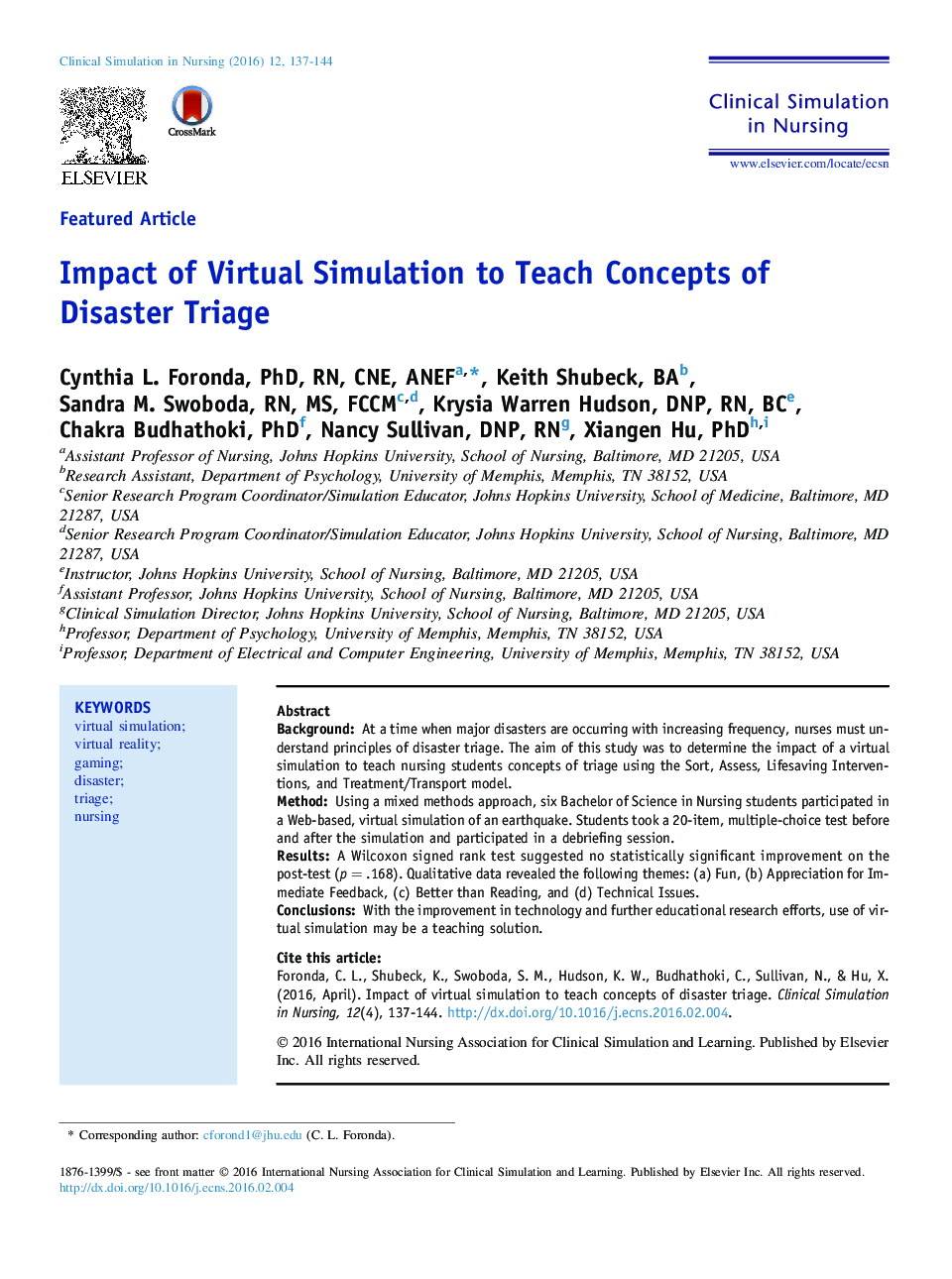| Article ID | Journal | Published Year | Pages | File Type |
|---|---|---|---|---|
| 2646923 | Clinical Simulation in Nursing | 2016 | 8 Pages |
•Facilitating an in-person disaster simulation can be resource intensive.•Virtual simulation may be a low-resource solution to teach principles of triage.•All students expressed enthusiasm about the simulation—stating that it was fun and better than reading.
BackgroundAt a time when major disasters are occurring with increasing frequency, nurses must understand principles of disaster triage. The aim of this study was to determine the impact of a virtual simulation to teach nursing students concepts of triage using the Sort, Assess, Lifesaving Interventions, and Treatment/Transport model.MethodUsing a mixed methods approach, six Bachelor of Science in Nursing students participated in a Web-based, virtual simulation of an earthquake. Students took a 20-item, multiple-choice test before and after the simulation and participated in a debriefing session.ResultsA Wilcoxon signed rank test suggested no statistically significant improvement on the post-test (p = .168). Qualitative data revealed the following themes: (a) Fun, (b) Appreciation for Immediate Feedback, (c) Better than Reading, and (d) Technical Issues.ConclusionsWith the improvement in technology and further educational research efforts, use of virtual simulation may be a teaching solution.
